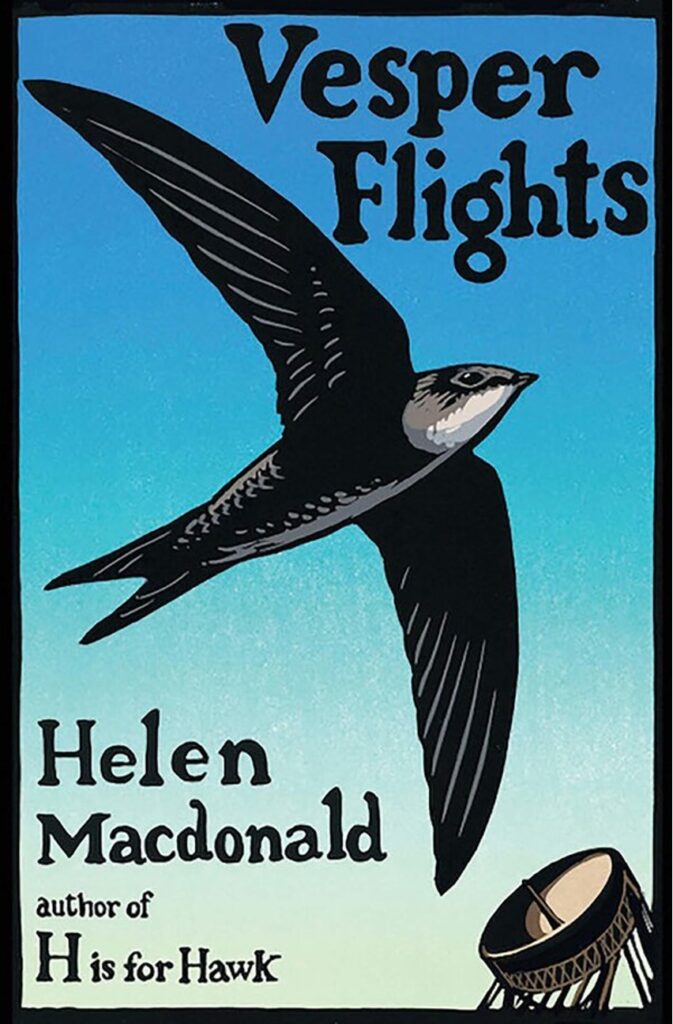
The author of the exquisite and deeply moving memoir H Is for Hawk returns with this collection of essays. She compares them to the objects you might find in an 18th-century cabinet of curiosities, a Wunderkammer, where objects of many sorts from the natural world are displayed so that their strangeness and accidental proximity might inspire wonder and perhaps prompt a larger discussion.
Like the best sort of host, MacDonald opens the doors on these wonders and then lets us make of them what we will. There’s no lecturing. Although she is a presence in the book, it is not about her. Instead, her evocative prose bears witness to these marvels, inviting us to experience them ourselves.
The essays range around the world and into varied environments: from fields and forests to volcanos and the Empire State Building. As MacDonald tells us about wild boars, boxing hares, and several sorts of birds, she encourages us to see the natural world as something other than a reflection of ourselves. “What science does is what I would like more literature to do too: show us that we are living in an exquisitely complicated world that is not all about us. It does not belong to us alone. It never has.” We are introduced to animals and birds as sentient beings in their own right, with their own needs and wants.
Another theme that runs through these essays is the effect of the loss of habitat on these creatures: those we have lost, such as the wood warblers, and the adaptions some have made, such as the peregrine falcons nesting on the decommissioned power chimneys of the Poolbeg Power Station in Ireland.
For much of the 20th century, falcons were celebrated as romantic icons of threatened wilderness. The mountains and waterfall gorges where they chose to nest were sublime sites, where visitors could contemplate nature and meditate on the brevity of human existence. But there’s a romanticism to industrial sites too. The rusting chimneys and broken windows of the Poolbeg site have their own troubling beauty, that of things that have outlasted their use. Falcons haunt landscapes that speak to us of mortality, mountains by virtue of their eternity, industrial ruins by virtue of their reminding us that this too will in time be gone and that we should protect what is here and now.
Although she deplores the idea that the natural world should be preserved because we humans find it useful in lifting our moods or teaching us about ourselves, insisting instead that it has its own right to exist independently of us, she is not averse to showing how we benefit. She says, “At times of difficulty, watching birds ushers you into a different world, where no words need be spoken. And if you were watching urban falcons, this is not a distant world but one alongside you, a place of transient and graceful refuge.”
Among my favorite parts is the titular essay, which is about chimney swifts and their still mysterious ascent. Twice a day, at dusk and dawn, they fly up out of human sight, where “flying so high they can work out exactly where they are, to know what they should do next. They’re quietly, perfectly orienting themselves.” Another thing I learned is that “Unlike other birds, they never descend to the ground.” Now, when I walk in the evening and see the swifts whirling above, her words speak to me: “Swifts are magical in the manner of all things that exist just a little beyond understanding.”
Another, related theme in these essays is loss: the lost paradises of youth, the chestnut and elm trees that once graced our streets, the extinction or near-extinction of many species. This spring I was thrilled to hear a cuckoo while walking in England, where their population has dramatically declined. She says:
Increasingly, knowing your surroundings, recognising the species of animals and plants around you, means opening yourself to constant grief.
And:
Their loss is not about us, even though when that meadow disappeared, part of me disappeared, too, or rather, passed from existence into a memory that even now batters inside my chest. Look, I can’t say to anyone. Look at the beauty here. Look at everything that is. I can only write about what it was.
Yet there is hope here as well, and treasures to embrace. Even her “Eulogy” for her friend Stu is filled with peace and hope along with the sadness, its ending giving me goosebumps just remembering it.
I keep thinking I’ve finished this book, yet find myself coming back again and again to this essay or that one. I love the way she communicates the “qualitative texture of the world” and opens for me some of its wonders.
What essay or book have you read that reminded you of the wonders of the natural world?